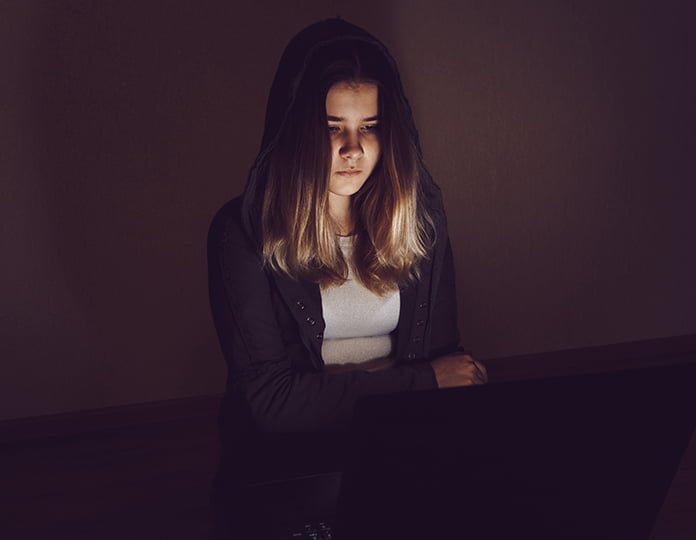What is cyberbullying?
When one person does something unpleasant in an online capacity, to another on purpose, a couple of times, with the intention of upsetting the other person, it is called cyberbullying. Cyberbullying can occur through social networking sites (such as Facebook or Instagram), or even text messaging or email. Cyberbullying has been a problem for a long time. One in four young people will experience cyberbullying at some time in their life. Because cyberbullying is constantly evolving as a result of new information and telecommunications platforms. There is disagreement among researchers that study cyberbullying on the best terminology to use.
The negative effects of cyberbullying can be physical, psychological, or academic in nature. While the cyberbully/ victim category bearing the brunt of the burden. Cyber victims have higher rates of depression and anxiety, as well as refusal to attend school and declining academic performance. These students are also more likely to report headaches, stomachaches, bedwetting, and a variety of other psychosomatic complaints.
The nature of cyberbullying varies by gender; girls are more likely to post hurtful comments online. Whereas boys are more likely to post hurtful pictures or videos online. According to the Cyberbullying Research Centre in the United States. There are numerous reasons why the dysphoric outcomes of cyberbullying differ from and potentially exceed those of traditional bullying. Computer-based communications.
For example, are much more permanent than verbal responses since they are retained in websites, internet archives, search engine caches, and user devices; it is easier to make hurtful, humiliating, or endangering statements on the Internet due to the comparative difficulty in accurately detecting the misbehavior and offending party, proving or verifying the act of wrong doing because of the ubiquity of computers and cell phones, as well as the “always-connected” lives that today’s adolescents lead, Internet victimisation is omnipresent beyond the school, playground, or neighbourhood; the youth is increasingly adopting new communication mediums and devices, and as a result, the pool of alternative offenders and victims is increasing rapidly (Hinduja 2010).
In the Indian context, the risk of cyberbullying is increasing year by year as a result of increased access to technology, low-cost internet plans, and politicians zealously pursuing and pushing the dream of “Digital India,” making its assessment and prevention even more urgent. The vast majority of the population now has access to the Internet via a computer, a tablet, or, more commonly, a mobile device. Our children and teenagers are the most vulnerable members of this population, as they are being thrown into cyberspace before they are psychologically capable of making sense of it.
According to Microsoft’s Global Youth Online behaviour Survey, India ranks third in cyberbullying, with 53 percent of respondents, mostly children, admitting to having experienced online bullying, trailing only China and Singapore (Anuradha Shetty, 2012). Children and adolescents are naturally inquisitive and, more often than not, more technologically competent than adults. The majority of these children who are exploring the Internet are not old enough to detect or understand the risks and consequences of their own online behaviour.

Psychological Impact of Cyberbullying:
Cyberbullying may have serious consequences for kids, including anxiety and PTSD, especially if they are susceptible to mental health concerns. A nasty remark, a hateful comment, an embarrassing photo or video, pranks, spreading rumors, pretending to be someone else, threatening messages or phone calls are all examples of cyberbullying.
While some of these activities might seem harmless, children and teens who fall prey to these might suffer from grave mental health issues. (Nixon, 2018) Cyberbullying, unlike traditional bullying, which is frequently limited to school and known bullies, can happen at any time of day or night and is conducted by anonymous sources.
This makes it more violent, at times, and vicious. The intensity of the consequences of victimisation might vary depending on the type of victimisation. According to one study, harassment experienced via text message or phone call was more harmful than harassment experienced via online images and posts. Unsurprisingly, a significant source of stress in young people’s life is cyberbullying. Studies show that 32% of kids who experience cyberbullying say they have experienced at least one indicator of stress. They might even feel responsible for being a victim of cyberbullying. Children are aware that once something exists, it will always exist. They may feel humiliated, exposed, and overwhelmed. When someone cyberbullies, they could send a lot of people insulting postings, mails, or SMS. (Extremera 2018)
Social Impact:
Schools may exclude and scorn children who are victims of cyberbullying. People frequently feel alone and isolated as a result. The importance of friendships at this age makes this more unpleasant. However, for many children, using these devices is the most significant means of communication. Turning them off typically means cutting them off from the rest of the world, making them feel more isolated. (Alavi et al,2017)
Emotional Impact:
Many cyberbullying victims will experience anger as a result of their experience. In fact, studies suggest that anger is the most typical response to cyberbullying (followed by being upset and worried). Unfairly treated children may prepare to avenge themselves. Aside from the potential for conflict, this is risky since it can trap them in the bully-victim cycle. It is sometimes more difficult said than done to forgive a bully, even if it is generally preferable than taking revenge. Speaking with a counsellor or therapist who can show them how to channel their wrath in healthy ways may be helpful for a youngster who is upset by cyberbullying.
Cyberbullying victims frequently struggle to feel safe. They may feel helpless and vulnerable. These ideas typically arise because via a computer or mobile device, online bullying can invade their home at any time of day. They no longer have a safe haven to flee to. Cyberbullying can feel like it’s all around you if you’re a victim. Although some cyberbullies choose people they know and have no issue identifying themselves. Some targeted teenagers might not be aware of the person responsible for their pain. (Ybarra et al, 2007)
Academic Impact:
Bullying causes them to regularly miss school far more frequently than other children. They might skip class to avoid being cyberbullied by other students or because the remarks they heard were degrading and embarrassing. As a result of their inability to focus or study, their grades can decrease. In rare circumstances, children may stop attending school altogether or lose interest in pursuing a post-high school degree. Cyberbullying victims have been known to damage themselves in some way as a result of their overwhelming feelings.
For instance, some persons may burn or slash themselves as a form of self-harm. Bullying and self-harm have been related in several studies. Cyberbullying also makes people more likely to commit suicide. Teenagers who experience peer bullying on a regular basis through text messages, instant messaging, social media, or apps may feel hopeless and think that the only way to end their suffering is to commit suicide. As a result, individuals can fantasise about dying to get away. (Andrea Baroncelli, 2014)
Prevalence:
Despite the fact that popular social media platforms such as Facebook and Twitter have minimum age requirements for joining. There are many children join these platforms by misrepresenting their age. Primarily because these platforms do not have any stringent guidelines for the age limit of joining. The Intel Security Teens, Tweens, and Technology Study released its findings in 2015 after performing in India over a five-year period, and found that 81% of kids between the ages of 8 and 16 actively engage on social media. Before the age of 13, nearly 77 percent of these children had a Facebook account. Almost 22% of these children, or one in every five, are victims of online abuse (Shruti Dhapola,2021). These 2015 figures are concerning, and we can only speculate on what they might be now.

Indian parents typically warn their children about strangers on the street. However, individuals hardly ever do so or even think to be concerned about it, despite the critical necessity to apply the same strategy to online behaviour. Cyberbullying has gained international attention as a result of an increase in reports of cases involving self-harm and suicide as well as distressing media headlines like “Two preteens arrested for cyberbullying after student kills herself.”
For example, mainstream Australian politicians are putting ideas for an “anti-cyberbullying taskforce” on the national agenda. The real-time debate about policymaking and guidelines to combat cyberbullying is taking place in parliament. According to one theory, the more people who witness an emergency crime, the less likely any of them will feel obligated to respond. The Bystander Effect is yet another name for it. In the case of cyberbullying, hundreds to thousands of people may regularly witness bullying or harsh criticism online but fail to intervene.
Furthermore, just as most social media platforms use social analytics to create algorithms that estimate user age, gender, and political leanings. There are actual mathematical algorithms to detect antisocial behaviour, bullying, or harassment online. These algorithms employ simple parameters to assess the content (words like “bitch,” “hate,” and “die”), direction, interval, and frequency of bullying. In order to assess whether a kid is being cyberbullied, law enforcement organisations, schools, and parents can utilise this strategy. In addition to bullying children, cyberbullying also frequently targets adults.
Cyberbullies, also known as trolls on the internet, who operate anonymously, have the ability to abuse and harass a person without fear of repercussions. Politicians, celebrities, and sportsmen are frequently the targets of cyberbullying, which upsets them as they report. However, there are no clear laws or regulatory guidelines in place to address this complex issue. Mainstream national TV channels are recognising the importance of this issue. In today’s world and are launching campaigns and programmes such as “Troll Police.” (Mitchell and Hoff, 2009).













Leave feedback about this